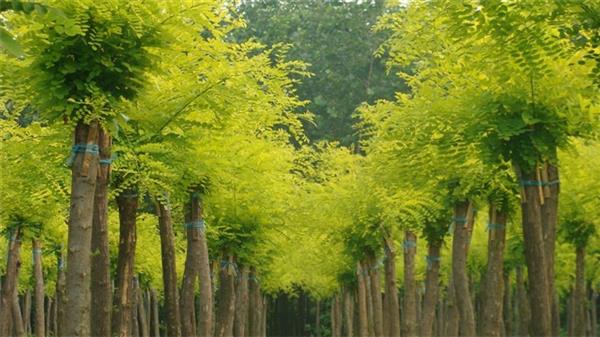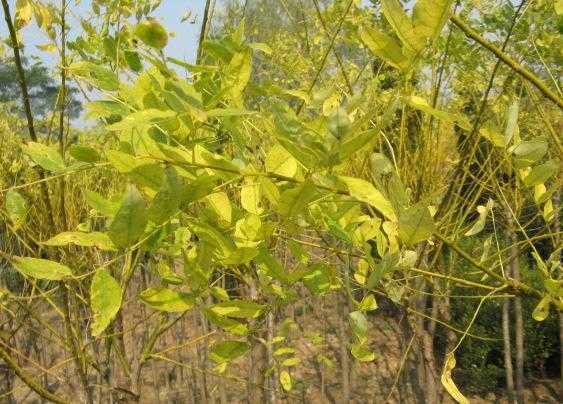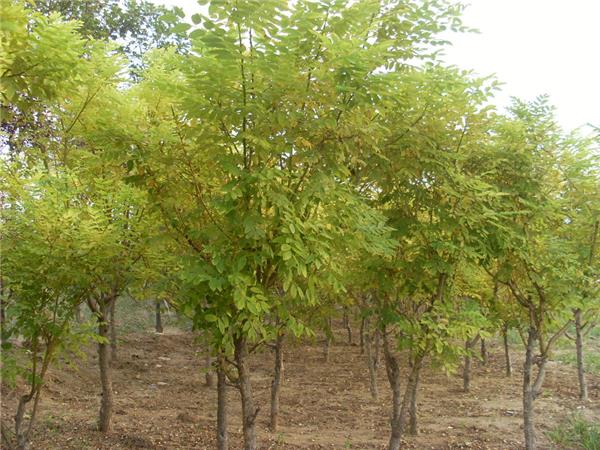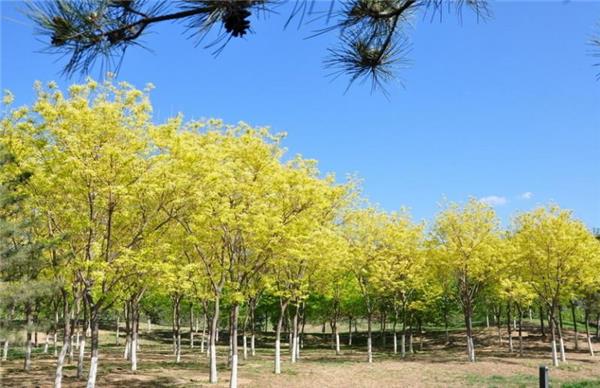Grafting Seedling technique of Golden Robinia pseudoacacia how to grow Golden Locust
The planting of Robinia pseudoacacia can be carried out by sowing, cutting and grafting, generally speaking, the survival rate of grafting is higher, which is the most cost-effective way of reproduction.

Grafting Seedling technique of Golden Sophora japonica
The grafting time is in the first and middle of April, when the sap will begin to flow before the rootstock seedlings germinate.
Grafting principle: cut the annual branches of Robinia pseudoacacia as scions and reserve them after removing compound leaves. Due to the hot weather and other reasons, it is best to adopt the method of picking scions with grafting, so as not to reduce the survival rate because of too long harvest time and too much water loss.
Grafting method: cut down from 1 to 1.5 square meters above the scion branch bud, cut down slightly with xylem to 1.5 to 2 centimeters below the bud base, and cut off the bud slice transversely with one knife. Then select the rootstock with a diameter of more than 0.5 cm, cut a section equal to the length and width of the budding slice from top to bottom at the smooth windward side of the rootstock, cut the lower end transversely and obliquely cut off the slice, and then insert the bud slice into the interface of the rootstock. The cutting surface alignment cambium is close to the cutting surface of the rootstock. The wounds were bound with plastic strips with a thickness of 0.03 cm and a width of about 1.2 m.
Cultivate the trunk: the grafted seedlings should be de-sprouted in time to promote the growth of new shoots after germination in summer. When the seedling is 60 cm high, in order to cultivate the straight trunk, the new shoots should be bound with bamboo poles or sticks until they reach the expected height. The height of rhizosphere bud in the same year can reach 3 cm, the DBH is 2 cm, and it can be used in the nursery for greening project in 2-3 years.

Shearing rootstock sprouting: cut the rootstock 1.5 cm above the bud, the rootstock is easy to sprout, should be erased in time.
Topping and heart-picking: when the buds grow to 6-8 meters, they begin to beat the top (that is, pinch off the head). After hitting the head, several side branches can grow, and when they grow to 6-8 meters, the second coring will be carried out. After two coring, 12 ~ 16 lateral branches can grow from one bud. It can be planted out of the nursery in the winter of that year or in the spring of the following year.
Prevention and control of diseases and pests: Golden locust is vulnerable to aphids and inchworms, especially the damage of seedlings will weaken the tree potential and affect growth, so it should be prevented and controlled in time.

The difference between Golden Locust and Golden Branch Robinia pseudoacacia
[color difference]: Jinzhi Robinia pseudoacacia can most obviously see that the time is winter, because it is a deciduous tree, after falling leaves in winter, only branches are left, the branches are golden yellow. The leaves are golden yellow and the branches are green in the three seasons of spring, summer and autumn.
[price difference]: in the seedling market, there is a great demand for colored leaf trees. The mother of golden locust and golden locust is Robinia pseudoacacia, which grows very slowly because of its short growth period. Therefore, the price is more expensive than Robinia pseudoacacia, relatively speaking, the price gap between Golden Locust and Golden Branch Robinia pseudoacacia is not very large!
[difference in survival rate]: after the verification of facts, the survival rate of grafting of Robinia pseudoacacia is low, and the survival rate of grafting of golden locust is high.

Golden Robinia pseudoacacia can be used as not only the main tree species but also mixed tree species in landscape configuration, which is suitable for various planting effects, such as isolated planting, cluster planting, group planting and so on. In the lakeside embankment with weeping willow, Chongyang wood, tallow tree, camphor, maple, peach and other flowers and trees, so that the lake reflection more brilliant and beautiful.
Related
- Wuhan Hospital Iron Tree Blooming Result Was Instantly Frightened by the Gardener Master
- Which variety of camellia is the most fragrant and best? Which one do you like best?
- What is the small blue coat, the breeding methods and matters needing attention of the succulent plant
- Dormancy time and maintenance management of succulent plants during dormancy
- Minas succulent how to raise, Minas succulent plant pictures
- What are the varieties of winter succulent plants
- How to raise succulent plants in twelve rolls? let's take a look at some experience of breeding twelve rolls.
- Attention should be paid to water control for succulent plants during dormant period (winter and summer)
- Watering experience of twelve rolls of succulent plants
- Techniques for fertilizing succulent plants. An article will let you know how to fertilize succulent plants.



